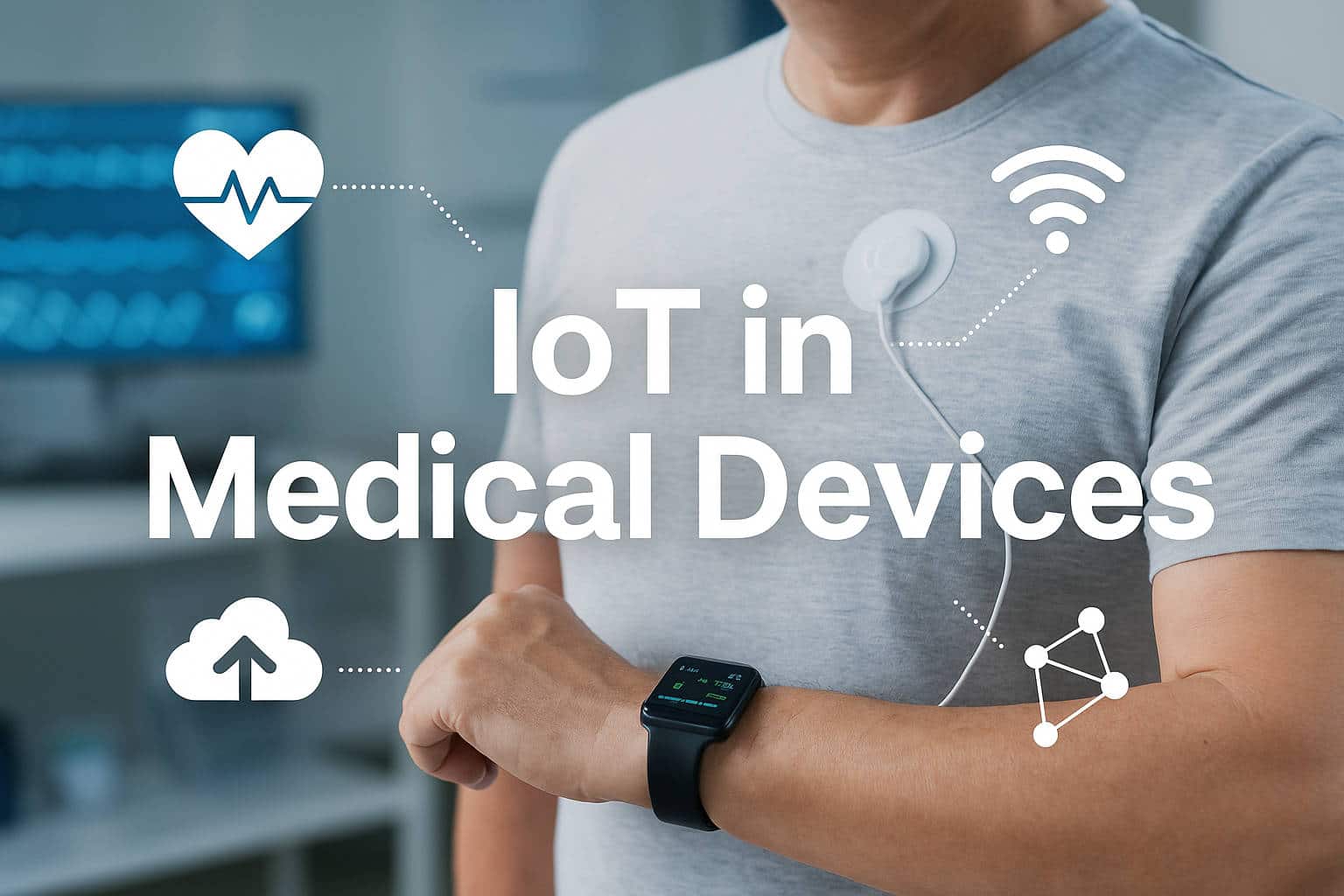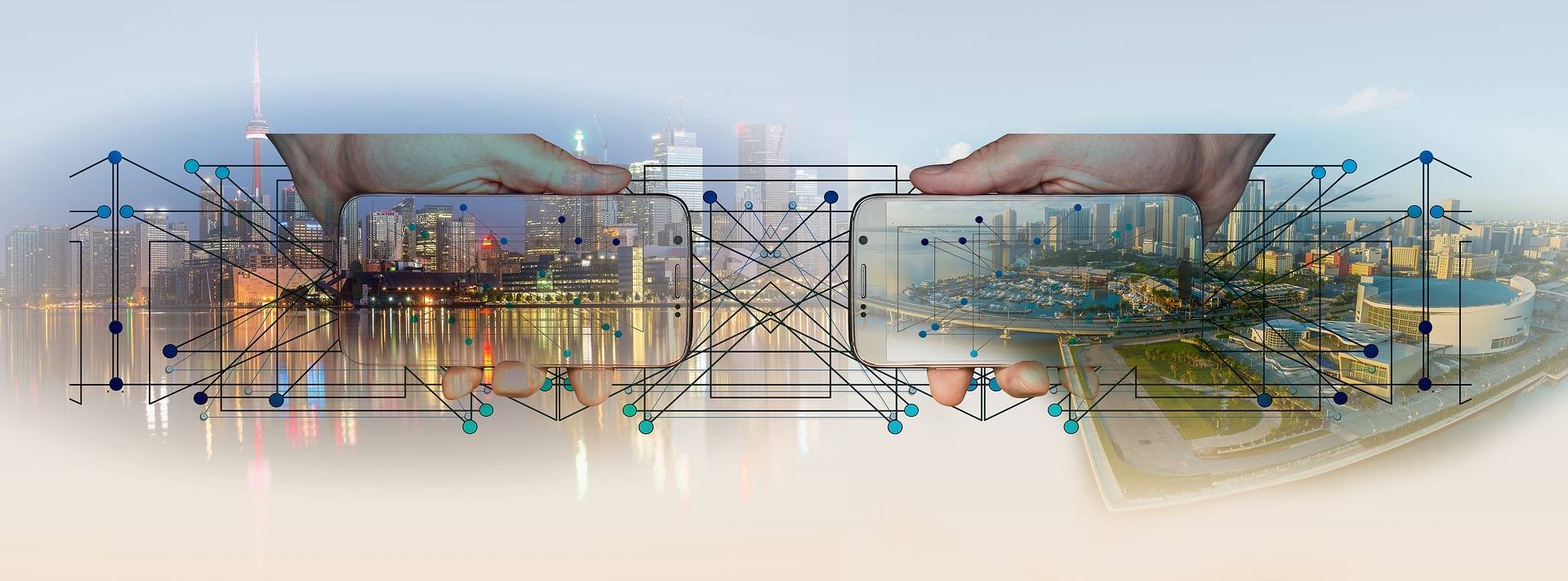Unlocking Connectivity in 2025: The Role of IoT in Advanced Medical Devices
From real-time patient monitoring to smart diagnostic tools, the Internet of Things (IoT) in advanced medical devices is transforming how care is delivered, data is shared, and outcomes are improved.
For medical device startups and consultants navigating FDA compliance and global regulatory challenges, understanding the evolving role of IoT is essential. But alongside the promise of smarter, more efficient healthcare comes a set of complex challenges: data security, interoperability, and patient privacy.
In this post, we’ll explore how IoT is reshaping the medical device landscape, the most powerful use cases, key risks to consider, and how a trusted cloud partner like Galen Data can help you bring your connected device to market safely and effectively.
What Is IoT in Advanced Medical Devices?
The Internet of Things (IoT) refers to a network of physical devices connected to the internet, all capable of collecting and sharing data. When applied to medical devices, IoT enables a wide range of capabilities that were previously unimaginable, transforming passive instruments into intelligent, data-driven tools.
According to Arm’s glossary on Medical IoT, this connectivity is central to modern healthcare. It allows for:
- Remote monitoring of chronic diseases
- Telemedicine integration for real-time consultation
- Predictive analytics that help anticipate health issues before they escalate
However, these benefits only materialize if the underlying infrastructure—namely, data storage, security, and compliance—is handled correctly. That’s where partners like Galen Data come in, providing the backbone for secure, scalable connectivity from prototype to production.
Top Use Cases for IoT in Medical Devices
As IoT technology continues to mature, its applications in medical devices are rapidly expanding—from hospital-grade equipment to consumer-facing tools. Here are five of the most impactful and fast-growing use cases of IoT in advanced medical devices:
Remote Patient Monitoring
Perhaps the most widely adopted application of IoT in healthcare, remote patient monitoring (RPM) enables the continuous tracking of patients outside of clinical settings. Devices such as blood pressure monitors, pulse oximeters, and ECG patches can send real-time data directly to care teams, enabling faster intervention and reducing hospital readmissions.
For patients managing chronic conditions such as diabetes, COPD, or heart disease, RPM devices provide peace of mind while giving physicians a more comprehensive view of health trends over time. On the provider side, it reduces the strain on in-person visits and opens up opportunities for virtual care.
Smart Wearables and Implants
Wearable devices have moved far beyond step counting. Today’s smartwatches, biosensors, and even clothing-integrated devices can track vital signs, detect falls, and deliver critical health metrics directly to physicians or caregivers.
In parallel, implantable medical devices—such as connected pacemakers and neurostimulators—are becoming increasingly sophisticated. These implants can communicate directly with healthcare providers, notifying them of irregularities or device malfunctions before symptoms appear.
As highlighted in ScienceDirect’s research, these devices are not only improving patient safety but also laying the groundwork for more predictive and personalized care.
Connected Imaging and Diagnostic Tools
Imaging systems and diagnostic tools equipped with IoT connectivity can now send images and test results directly to cloud-based platforms for real-time review, second opinions, or AI-assisted analysis.
For example, a connected ultrasound machine can transmit high-resolution images to a secure server, where machine learning algorithms analyze the scan and flag potential anomalies, accelerating the diagnostic process and improving accuracy.
Medication Management Systems
IoT is also making medication adherence more manageable and measurable. Smart pill bottles and dispensers can remind patients when it’s time to take their medication and notify caregivers if doses are missed.
In clinical settings, connected infusion pumps and dosing systems are reducing human error and making treatment more precise. These systems can also log each administration, making it easier for providers to audit and adjust care plans as needed.
Hospital Asset and Workflow Optimization
IoT doesn’t only apply to patient-facing tools. Behind the scenes, connected devices are helping hospitals and clinics run more efficiently. From tracking the location of wheelchairs and defibrillators to monitoring the condition of refrigerated medications, IoT helps reduce waste, to minimize downtime, and improve staff productivity.
These systems also enable predictive maintenance for critical equipment, alerting staff to potential issues before devices fail. This minimizes costly outages and ensures that life-saving technology is always available when needed.
However, with every connection point comes a new vulnerability, and the more interconnected the ecosystem, the more crucial it becomes to manage data securely and compliantly.
The Benefits of IoT in Advanced Medical Devices
The promise of IoT in healthcare isn’t just about flashy gadgets or futuristic tools—it’s about real, measurable improvements in how we care for people. Here are four key benefits that illustrate why IoT has become a driving force in next-generation medical technology.
1. Improved Patient Outcomes
With real-time monitoring, providers can catch subtle changes in a patient’s health status before they escalate into emergencies. For example, a smart cardiac monitor might detect an irregular rhythm and trigger a remote alert, prompting an early appointment and preventing hospitalization.
2. Operational Efficiency
Beyond patient care, connected medical devices streamline workflows for healthcare providers and manufacturers. IoT automates routine processes, such as data collection, reporting, and device calibration, freeing up clinical staff to focus on more complex tasks.
3. Scalability of Care
One of the most powerful advantages of IoT-enabled devices is their ability to expand access to care. By reducing the reliance on in-person visits and centralized systems, these tools make it easier to reach patients in rural, underserved, or geographically dispersed areas.
4. Data-Driven Innovation
Every data point collected by a connected device adds value, not only for individual care but also for broader innovation. With secure, structured access to device and patient data, manufacturers can leverage machine learning to develop more intelligent algorithms, tailor future product features, and gain insights into population-level health trends.
The benefits are clear: IoT in advanced medical devices delivers better care, more innovative products, and stronger business models. But these rewards come with a set of responsibilities and new challenges.
Overcoming the Challenges of IoT Adoption
While the benefits of IoT in advanced medical devices are undeniable, realizing them is no small feat. Here are the most pressing challenges medical device companies must solve to bring safe, scalable IoT solutions to market.
1. Cybersecurity Risks
With increased connectivity comes greater risk. IoT medical devices are particularly vulnerable to cyber threats because they often operate with limited computing power, minimal encryption, and inconsistent update cycles. Hackers may exploit these weaknesses to access patient data or disrupt device functionality, both of which can have serious clinical consequences.
A recent review from Lumifi Cyber highlights some of the most frequently targeted devices, including insulin pumps and cardiac monitors. The takeaway? Security must be embedded from day one, not treated as an afterthought.
2. Interoperability and Data Silos
Proprietary protocols, non-standardized data formats, and fragmented APIs can lead to data silos that limit clinical utility and slow down innovation. For healthcare systems, this also creates operational headaches, including redundant data entry, inconsistent records, and incomplete insights.
To address this, device makers must design with interoperability in mind.
3. Regulatory Compliance
The regulatory landscape for connected medical devices is both global and evolving. In the U.S., the FDA has issued specific guidance for cybersecurity in medical devices and has increased scrutiny of software-driven technologies. Meanwhile, data privacy regulations such as HIPAA, GDPR, and others require rigorous controls on how patient information is collected, stored, and shared.
For startups and mid-sized companies, keeping pace with these rules, while also building and shipping a product, can feel overwhelming. Yet compliance is non-negotiable. A misstep could delay approvals, stall partnerships, or result in costly penalties.
4. Managing and Making Sense of Big Data
IoT-enabled devices generate massive volumes of data. But having access to more information doesn’t automatically translate into better outcomes—unless that data can be structured, filtered, and analyzed effectively..
Navigating these challenges requires more than just technical skill—it demands the right partners and infrastructure.
Data Management of IoT in Advanced Medical Devices
The future of healthcare is connected—and that future is already here. From improving patient outcomes to enabling more responsive care, IoT in advanced medical devices is revolutionizing the medical landscape. But innovation alone isn’t enough. To succeed, device makers must also meet rising expectations for data security, interoperability, and compliance.
Partner with Galen Data today to:
- Develop a secure and scalable data management plan.
- Leverage our expertise in medical device data and compliance.
- Focus on innovation while we handle the infrastructure.
Schedule a call with us today to discuss your specific needs and see how Galen Data can help you store, manage, and secure your medical device data at scale.






